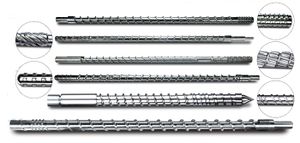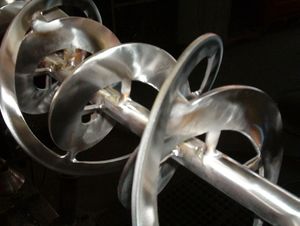Difference between revisions of "Mixing Screws"
Jump to navigation
Jump to search
| (2 intermediate revisions by one other user not shown) | |||
| Line 7: | Line 7: | ||
* Please start editing this page after the /noinclude | * Please start editing this page after the /noinclude | ||
* -------------------------------------------------></noinclude> | * -------------------------------------------------></noinclude> | ||
[[File:Mixing screws.jpg|thumb|right|Mixing Screws]] | |||
[[File:Mixing-screw2.jpg|thumb|right|Mixing Screws]] | |||
'''Mixing Screw''' is a low shear plastics mixing screw that provides the processor with outstanding color mixing.A mixing screw is a modification of a standard screw that incorporates one or more special mixing sections.Mixing Screws are an excellent solution for the processing of thermoplastic resins with single screw extruders and injection moulding machines.Mixing Screws are used for both for new high performance machines as well as for optimisation and upgrading of existing extrusion machinery. | |||
==Advantages== | |||
* Increased throughput | |||
* Broader processing range | |||
* Reduction of pressure and throughput fluctuations | |||
* Lower melt temperature | |||
* Improved melt homogeneity | |||
Latest revision as of 05:42, 6 September 2012
Mixing Screw is a low shear plastics mixing screw that provides the processor with outstanding color mixing.A mixing screw is a modification of a standard screw that incorporates one or more special mixing sections.Mixing Screws are an excellent solution for the processing of thermoplastic resins with single screw extruders and injection moulding machines.Mixing Screws are used for both for new high performance machines as well as for optimisation and upgrading of existing extrusion machinery.
Advantages
- Increased throughput
- Broader processing range
- Reduction of pressure and throughput fluctuations
- Lower melt temperature
- Improved melt homogeneity

